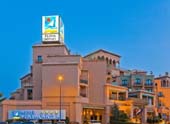Isla Cristina Andalucia Spain – Located in the not so touristy Costa de la Luz region of Andalucia, the resort of Isla Cristina will not be know to most British holidaymakers, but should not be ignores as a possible destination for your holiday this year. With fabulous unspoilt beaches, a charming fishing port and excellent weather conditions, Isla Cristina might be just what you are looking for in a peaceful vacation. It might be a good idea to avoid late July and August in Isla Cristina, as thousands head here from Seville, but any other time you can expect an enjoyable stay. Isla Cristina can be reached from either Seville airport or Faro airport in nearby Portugal.
View a map of Isla Cristina here: http://www.needahandspanishproperties.com/isla-cristina-map.html
